saddle thrombus cat signs
This results in nerve and muscle damage. A saddle thrombus is a blood clot that blocks blood supply to the back legs.

My Cat Has Suddenly Gone Lame In Her Hindquarters And Seems To Be In A Lot Of Pain Florida Veterinary Hospital
If this supply is suddenly blocked a cat can become paralysed on its back legs.

. However what is far more common is a disease called aortic thromboembolism ATE also known as a saddle thrombus. One of the first symptoms is howling and the cat laying on its side. Symptoms appear suddenly and include severely painful paralysed back legs.
CHF has been reported for 40 to 67 of cats with ATE. If the clot moves past the saddle and enters into just one iliac artery only the hind leg will be involved. Feline aortic thromboembolism FATE also known as saddle thrombus is a serious and sometimes fatal complication of heart disease in cats.
FATE is a serious and painful condition with serious implications. Clinical signs of saddle thrombus reflect loss of blood supply to one or both hind. Long-term heparin therapy is best accomplished with LMWH.
The most common presentation is that of distal aortic thromboembolism saddle thrombus at the level of the aortic trifurcation which is characterized by paralysis or paresis of one or both pelvic limbs. More than 90 of affected cats present with a lateralizing posterior paresis caused by a saddle clot at the distal aortic trifurcation. 121213 therefore some cats may also exhibit signs of CHF eg dyspnea.
The majority of cats with aortic thromboembolism have had none of these things and the saddle thrombus is the very first symptom of a problem. In fact it may be the first and only sign of heart disease in some cases. Michael Schaer DVM DACVIM DACVECC describes the variation in presenting signs in cats that have experienced a thromboembolic event Saddle thrombus.
The cat will hyperventilate and cry out with extreme pain. Feline aortic thromboembolism FATE or saddle thrombus is a catastrophic lesion where a blood clot gets embolised and lodged into the aortic trifurcation Borgeat et al 2014It is a fatal disease that may progress very quickly as a cat can go from being healthy to be in severe distress within few minutes Brent et al 2006FATE is mostly. A saddle thrombus is truly every cat parents worst nightmare.
In 76 of cats with saddle thrombus the FATE episode was the very first sign of heart disease. This causes severely reduced blood flow to the tissues receiving blood from that particular part of the aorta leading to decreased oxygen in the tissues. Despite the extreme presentation the cat may be able to recover from the episode but it is important to understand how it came.
Distal aortic embolus is the most common. J Am Vet Med Assoc 19922014613-618. This happened last Saturday and my husband and I are in a state of shock and grieving badly.
Middle-aged male cats are reportedly at a higher risk for developing saddle thrombus. Two products approved for use in people Dalteparin FragminEisai and enoxaparin LovenoxSanofi-Aventis are used most commonly in cats to prevent ATE. They may be vocalizing loudly howling yowling screaming.
HOW BAD IS THIS SITUATION. The feet will likely be colder than other parts of the body and may be bluish in color. The clot or a fragment of it can subsequently flow to an anatomical location in the systemic circulation normally represented by a saddle location at the aortic trifurcation and subsequently compromise.
It comes on suddenly and appears to paralyze the cat causing one or both rear legs to become useless and even noticeably cold. The signs of a stroke in cats are very different to those seen in humans and fortunately they are normally much milder. The main sign is weakness or paralysis of the hind limbs.
These signs of aortic thromboembolism in kitties depend on which blocked and whether the blockage is a total or partial blockage. Forget broken bones and fractured teeth. The embolus causes partial or complete loss of blood supply to one or both of the hind limbs.
The saddle thrombus comes from a larger clot in the left atrium of the heart. Cats are typically in a lot of pain when they are experiencing this. A saddle thrombus is a blood clot that lodges at the base of the aorta.
This is the stuff of nightmares. Once a thrombus forms it may stay static. Owners can be taught to give the injections at home just as with an insulin injection.
When it gets stuck its now called an embolism. Usually the signs of saddle thrombus will come on incredibly quickly. It affects as many as 25of cats with hypertrophic cardiomyopathy a common feline heart conditionFATE usually strikes without warning.
This is where a blood clot blocks the descending aorta leading from the heart the descending aorta supplies blood to the entire back end of the cat. In cats the initial blood clot tends to form inside the cavities of the left heart particularly in the left atrium and left auricle. Jelly was the most well behaved rescue cat we have ever had and the most.
A saddle thrombus is an emergency contact your vet immediately if your cat is showing symptoms. Its important to start treatment as soon as possible to give your cat the best chance of. The result in the case of a saddle thrombus an embolism at the base of the aorta is that it cuts off the blood supplymostly to the back legs which is an extremely painful condition.
The saddle thrombus comes from a larger clot in the left atrium of the heart. These signs indicate immediate saddle thrombosis in cats treatment. It happens when a clot breaks off and blocks the femoral arteries which is the most pain a cat can experience.
Risk factors clinical signs and survival in cats with a clinical diagnosis of idiopathic hypertrophic cardiomyopathy. Blood clots can also form in the heart especially in cats with enlargement of the left atrium. 72 percent of cats with a saddle thrombus have both rear legs affected.
The outcome is variable but has potential to be very bad. This condition is also sometimes called a saddle thrombus. An aortic thromboembolism results when a blood clot is dislodged and travels through the aorta becoming lodged in a distant location.
The first signs are often general or partial seizures while other. Embrace Pet Insurance shares symptoms treatment and cost for this condition. A thrombus is a blood clot that may form when the blood flow of an artery or vein is restricted when the lining of a blood vessel is damaged or when another condition causes a cat to produce clots excessively.
Median survival of saddle thrombus cats with heart failure is 77 days while median survival of saddle thrombus cats without heart failure is 223 days. It can cause a partial or full obstruction to blood vessels at its site of origin. Clinical signs are attributable to CHF and specific tissues or organs that are embolized eg azotemia from renal infarction bloody diarrhea from mesenteric infarction posterior paresis from saddle embolus.

Home Jonathan Wood Veterinary Surgeons

Pet Doctor Saddle Thrombus Youtube

Arterial Thromboembolism Semantic Scholar
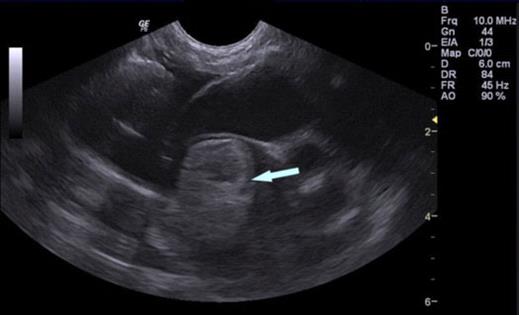
Feline Aortic Thromboembolism Fate Or Saddle Thrombus Veterinary Partner Vin

Symptoms Of Saddle Thrombus In Cats Firstvet
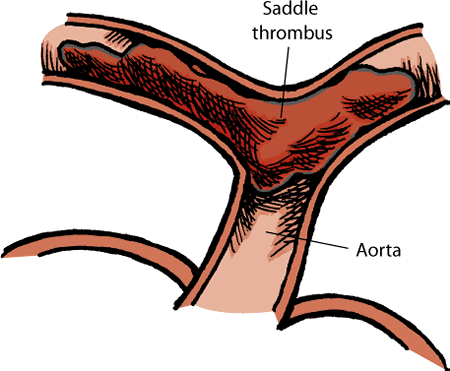
Blood Clots And Aneurysms In Cats Cat Owners Merck Veterinary Manual
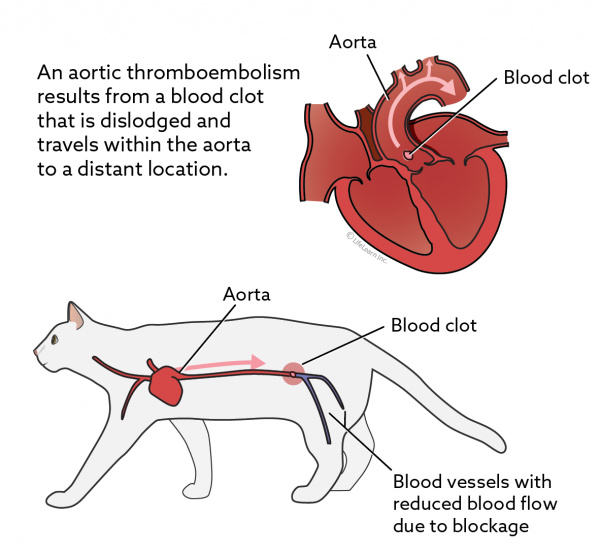
Aortic Thromboembolism In Cats Vca Animal Hospitals
/stethoscope-813823560-6ffd152f92f14f4b979456c98d2bd6a1.jpg)
How To Treat Saddle Thrombus In Cats
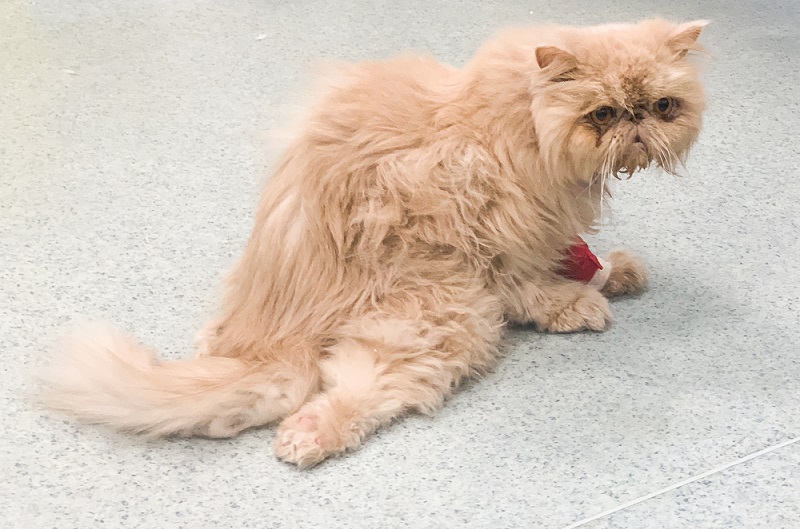
Aortic Thromboembolism Anything New
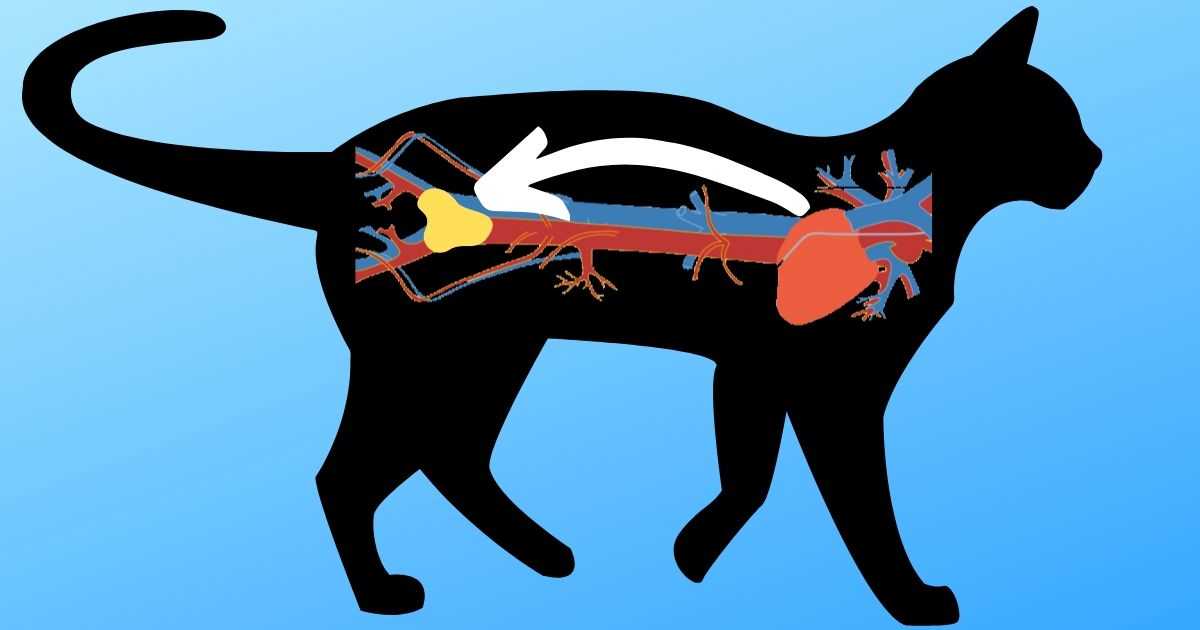
Aortic Thromboembolism In Cats Survival Data Walkerville Vet
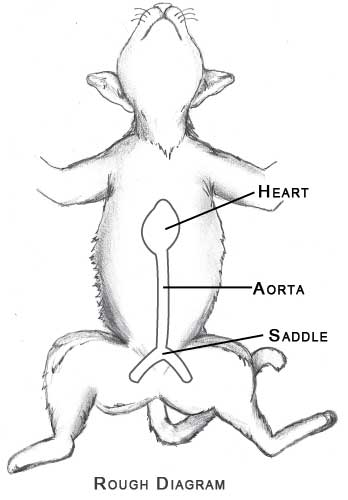
Saddle Thrombus Aortic Blood Clots In Cats

Saddle Thrombus Every Cat Owner S Worst Nightmare Petmd

Kitty Cat With A Saddle Thrombus Youtube

Feline Arterial Thromboembolism Today S Veterinary Practice

Saddle Thrombus In Cats Aortic Thromboembolism Kingsdale Animal Hospital

Veterinary Emergency Clinic Beware Of Saddle Thrombus If You Notice That Your Cat S Hind Feet Are Very Cold Bluish In Color Or Weak Or They Re Yowling Or Crying In Pain They

Saddle Thrombus In A Cat Youtube
Managing A Patient With Arterial Thromboembolism Veterinary Practice
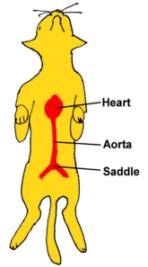
Feline Aortic Thromboembolism Fate Or Saddle Thrombus Veterinary Partner Vin